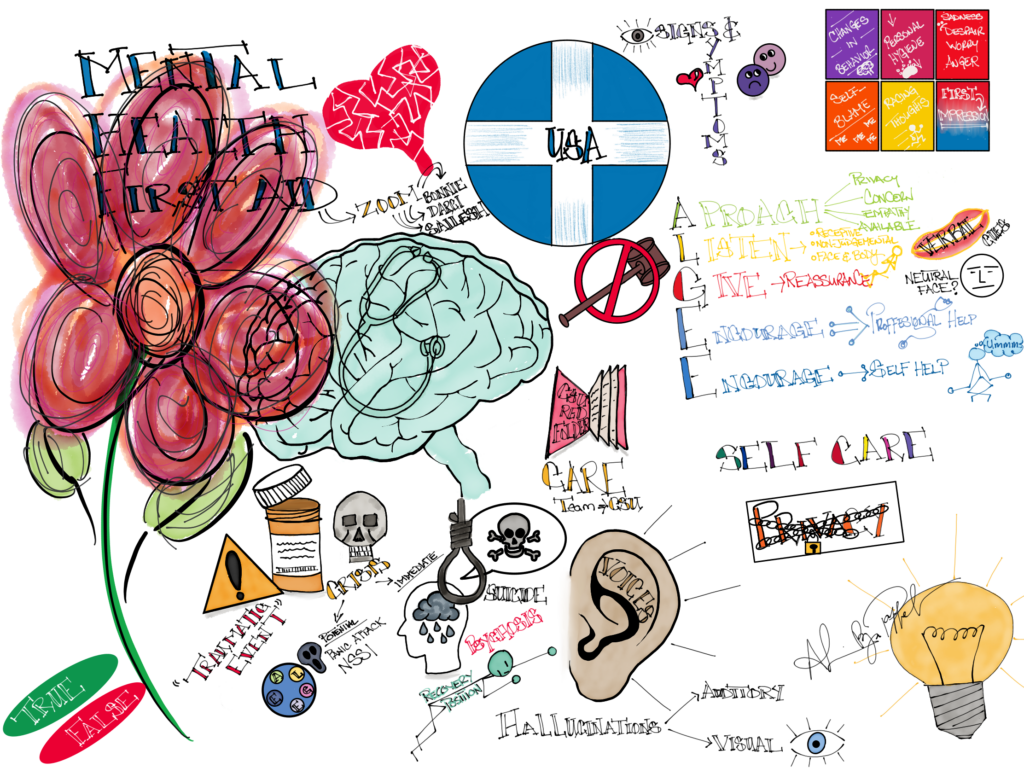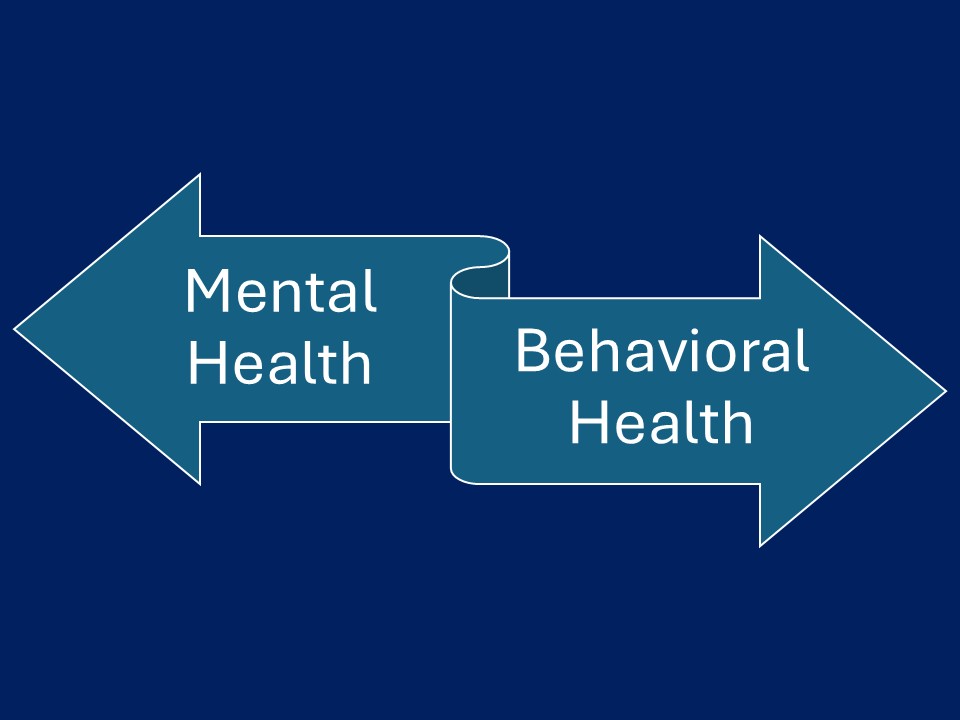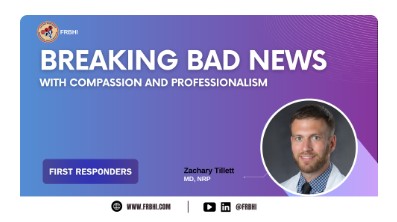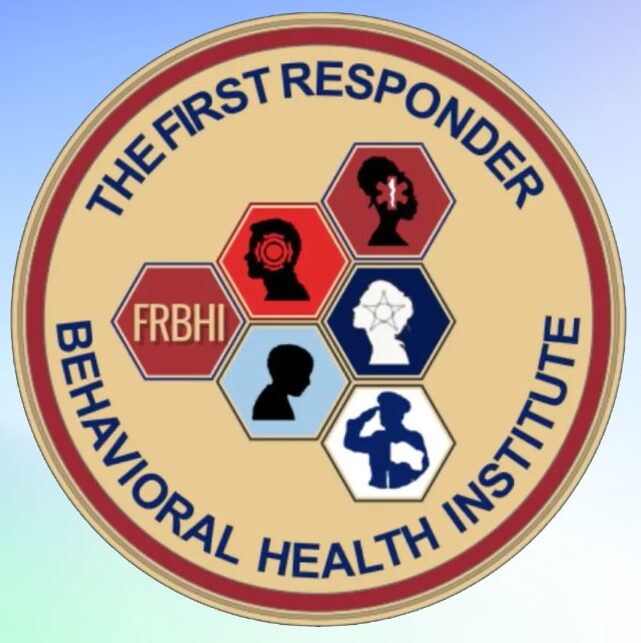Sponsored Content by the First Responder Behavioral Health Institute
By: Robert Avsec, Battalion Chief (Ret.), Executive Fire Officer
The phrase “cutting edge” comes from the literal idea of a blade’s sharp edge—something at the forefront of action, able to cut through resistance. Its earliest figurative uses date back to the late 19th and early 20th centuries, when the phrase was used to describe progressive ideas, particularly in the fields of business and science. It evolved metaphorically to describe technological and intellectual advancements that lead the way in many fields. In this article, we’ll look at some of the “cutting edge” approaches being used to aid first responders with mental or behavioral health problems.
Are mental health and behavioral health the same thing or different?
But first, let’s look at how mental health and behavioral health differ because, though the terms mental health and behavioral health are closely related, each has a distinct focus, especially in the context of first responders:
Mental Health refers specifically to the emotional, psychological, and cognitive well-being of first responders. It includes conditions like depression, anxiety, PTSD, and other mental health disorders that may arise from the high-stress and traumatic nature of the work that first responders do.
Behavioral Health is a much broader term that—while it encompasses mental health—it also includes behaviors that can impact an individual’s overall well-being. For first responders, these behaviors can involve substance abuse, coping mechanisms, altered sleep patterns, and poor lifestyle choices that affect a first responder’s ability to perform their duties and maintain their personal health.
In essence, mental health focuses on the mind and emotional state, while behavioral health looks at the interplay between mental health and an individual’s actions or habits. Both are critical areas for first responders, given the unique challenges they face.

Examples of “cutting-edge” strategies for first responder mental and behavioral health
Here are some innovative strategies being used to enhance mental and behavioral health services for first responders:
- Mental Health First Aid training where the first responders are receiving specialized training to recognize and respond to mental health crises in both their colleagues and the public, bridging the gap between immediate stabilization and professional care.
- Peer Support Networks emphasize peer support, where trained first responders provide emotional and psychological assistance to their colleagues. This approach leverages shared experiences to foster trust and understanding.
- Trauma-Informed Therapy using techniques such as Eye Movement Desensitization and Reprocessing (EMDR) and Cognitive Behavioral Therapy (CBT) are tailored to address trauma-related conditions like PTSD. These therapies are often integrated into specialized programs for first responders.
- Early Intervention Systems focus on recognizing early signs of mental health challenges, such as mood swings or sleep disturbances, to provide timely support and prevent escalation.
The above are examples of reactive programs or therapies in that they are applicable for situations where individuals may already be experiencing abnormal psychological responses to abnormal situations. Here are a couple of more initiative-taking initiatives that first responder organizations can employ to help their people avoid the need for reactive measures.
- Psychological Safety Initiatives that foster environments where responders feel safe discussing mental health concerns without fear of stigma or repercussions. This includes leadership training to encourage open dialogue and peer support.
- Annual Behavioral Health Screenings where agencies are incorporating routine mental and behavioral health assessments into annual medical evaluations, allowing for early intervention and ongoing support.
These strategies represent a shift toward initiative-taking, evidence-based care tailored to the unique needs of first responders.
Sharpening the “cutting-edge”
Strategies and programs that focus on the mental and behavioral health of first responders are evolving rapidly, integrating research, technology, and proactive strategies to support firefighter mental health. However, many of those strategies and programs are reactive in that they address an individual’s needs after they begin having mental or behavioral health issues. So, how do we become more proactive?

In an article published on Fire and Safety Journal Americas, Dr. Kristen Wheldon, Psy.D, emphasizes the role of psychology in modern firefighting advocating for resilience-building programs that simulate high-stress scenarios to enhance coping strategies and decision-making.
One example is Virtual Reality (VR) simulations that are being used to help first responders process traumatic events and build resilience. These immersive experiences replicate high-stress scenarios in a controlled environment, aiding in emotional regulation and improving decision-making.
The First Responder Behavioral Health Institute (FRBHI)
At FRBHI, Clinical Program Director Joseph Brigandi and his staff offer innovative courses that can proactively aid first responders in developing their resilience to the inherent mental and behavioral health risks they face.
According to Brigandi, there are three principles that guide the development of every course offered by FRBHI. “A course must address at least one of the following: psychology of self (the first responder), psychology of the public (the person or persons that are receiving services), or psychology of the organization (the first responder’s organization).”
The approach that Brigandi and his staff use when developing courses focuses on giving first responders the knowledge and skills (i.e., the tools) to reduce the impact of stressful situations because they are better prepared. “I learned recently from one of the public safety organizations that we work with that 30-40 percent of the calls they respond to involve people with mental health issues,” said Brigandi. “If we give first responders the tools to better know and understand what they’re dealing with and how to best help that person, we’re helping those first responders to be more resilient.”
One example is the FRBHI course, Breaking Bad News with Compassion and Professionalism. “No paramedic or EMT program that we knew of teaches you how to tell someone that someone they loved or cared for has died and that can be a very stressful situation for any first responder depending upon the circumstances,” said Brigandi, “So, with the guidance and direction from Zachary Tillett, an ER physician and Nationally Registered Paramedic, we developed this course. And it’s offered to all first responders free of charge.
Brigandi provided a quick overview of the online course and an example of how it can be used by a fire company officer with their crew. “First, you watch the hour-and-a-half video from Dr. Tillett,” said Brigandi, “Then there are six vignettes that address six different types of death notifications, for instance, a death at a nursing home, the death of a child, of the death of a spouse. The officer would use the scenario sheet to lead a 10–15-minute discussion on the topic with their crew. Ideally, the officer would cover one discussion topic per tour of duty to enable their crew members to fully process what they learned.”
Once the six completed vignettes are completed and checked off in the system, each member completes a fifteen-question exam. Upon successful completion of the exam, each member would then receive a certificate for three CEUs that they can print off.
For more information on available courses from FRBHI, visit the Our Courses webpage.
Being on the forefront of first responder behavioral health means embracing innovation and evidence-based practices to address the unique challenges faced by first responders. It involves developing comprehensive systems of care that combine clinical expertise, peer support, and advanced technologies like virtual reality-assisted therapy. These approaches aim to enhance resilience, reduce suffering, and improve the overall well-being of first responders and their families.
 Fire & EMS Leader Pro The job of old firefighters is to teach young firefighters how to become old firefighters!
Fire & EMS Leader Pro The job of old firefighters is to teach young firefighters how to become old firefighters!



